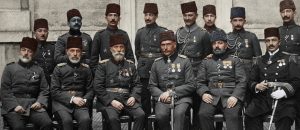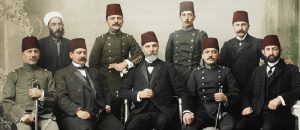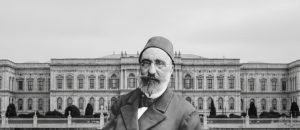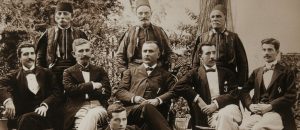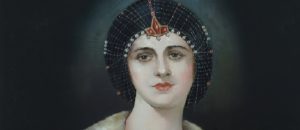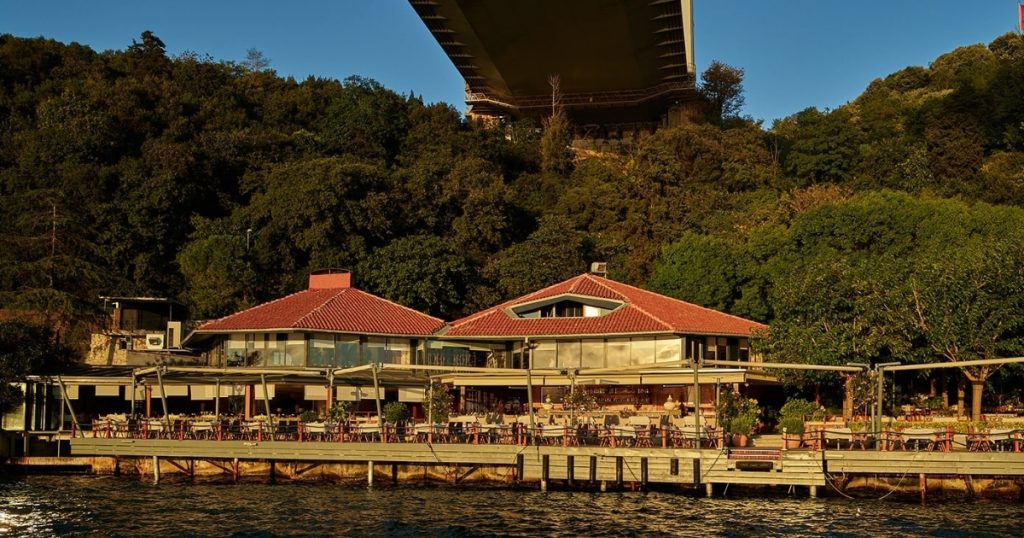Hosting a foreign head of state or ambassador at Dolmabahçe Palace operated within the framework of a perfect state visit protocol, meticulously calculated in every step and designed to showcase the empire’s power, order, and modernity. This protocol was not merely a set of rules, but a living diplomatic theatre intended to leave a psychological impact on the guest. Every stage, from the reception at the dock to the audience with the Sultan (Padişah), was an opportunity to prove that Dolmabahçe was a sophisticated diplomatic machine operating according to European standards.
Act 1: The Magnificent Reception at the Dock
A foreign statesman’s experience at Dolmabahçe would begin in the waters of the Bosphorus, even before stepping ashore. The guest would be taken from their own ship and transported towards the palace via the Sultan’s Barge (Saltanat Kayığı), which the Sultan had sent, adorned with gilded decorations and velvet seats. During this journey, the palace’s magnificent facade facing the sea would gradually become visible, leaving the first monumental impression on the guest.
When the barge docked at one of the Palace’s sea gates, the visitor would be received by the Minister of Protocol (Teşrifat Nazırı) and high-ranking palace officials. Simultaneously, the Palace Guard Regiment (Saray Muhafız Alayı), lined up in perfect formation on the palace dock, would hold a saluting ceremony accompanied by cannon fire in the guest’s honor. From the very first step, both military order and the flawless operation of the civil bureaucracy would be demonstrated to the guest.
Act 2: The Ascent to the Hall of Ambassadors (Süfera Salonu)
Following the reception, the guest would be taken to one of the palace’s most magnificent and strategic locations: the Hall of Ambassadors (Süfera Salonu). To reach this hall, the visitor had to ascend the famous Crystal Staircase (Kristal Merdiven), which dazzled with balustrades made of Baccarat crystal. This ascent carried not only a physical but also a symbolic meaning; the guest was, as it were, climbing towards the glittering heart of the empire.
The Süfera Salonu served as a waiting and reception room where ambassadors and guests were hosted and final preparations were made before the audience with the Sultan. With its gold-leaf ceilings, gigantic Hereke carpet, valuable furniture, and fireplace, this hall was designed to demonstrate the Ottoman Empire’s wealth and its sharing of the aesthetic tastes of European aristocracy. Here, while the guest was served coffee or sherbet, the Minister of Protocol (Teşrifat Nazırı) would provide the final instructions on how to appear before the Sultan.
Act 3: The Audience (Before the Sultan)
The pinnacle of the visit was the moment the guest was received by the Sultan (Padişah). This reception usually took place in the Red Room (Kırmızı Oda), which adjoined the Süfera Salonu and had a more intimate atmosphere, or in the Ceremonial Hall (Muayede Salonu) for larger delegations. The audience was subject to extremely strict protocol rules:
- Entrance: The guest was presented to the Sultan by the Minister of Protocol (Teşrifat Nazırı). The Sultan usually awaited his guest either standing or seated on his throne.
- Presentation of Credentials: If the guest was an ambassador, they would present their sovereign’s letter (credentials – itimatname) to the Sultan.
- Interpreter: The meeting was conducted through the Sultan’s Chief Interpreter (Baştercüman). The Sultan rarely spoke a foreign language, which was a way of maintaining his authority.
- Duration and Subject: The duration of the meeting and the subjects to be discussed would be predetermined. The meeting would end when the Sultan stood up or gave a signal.
Each of these rules was designed to emphasize the Sultan’s supreme position and the sovereignty of the Ottoman State.
Final Act: Banquet and Farewell
Following the official meeting, a magnificent banquet was usually held in the Ceremonial Hall (Muayede Salonu) or one of the grand dining halls in the guest’s honor. At these banquets, the most exquisite examples of both Western (Alafranga) and traditional Turkish (Alaturka) cuisine were served together, and the Imperial Band (Muzıka-i Hümayun) would play compositions of Western music. The visit would conclude with an equally magnificent farewell ceremony. As the guest returned to their ship via the Sultan’s Barge, just as they arrived, they would leave with the impression that the Ottoman Empire was not only powerful but also a highly organized, modern, and civilized state.
Conclusion
In conclusion, the state visit protocol at Dolmabahçe Palace was a perfectly staged theatre showcasing the Ottoman Empire’s diplomatic intelligence and organizational capacity in the 19th century. Every reception, every staircase, every hall, and every offering was designed to prove to the foreign guest that the Ottoman Empire was an equal and respected member of the European state system. This protocol is the clearest indication that Dolmabahçe Palace was not just a building, but a living diplomatic machine that constructed the empire’s international image.







